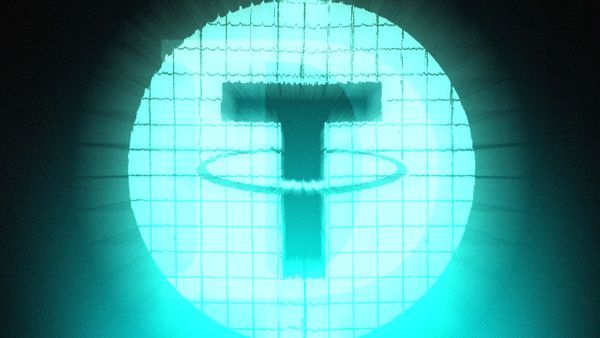
Media Obtain Tether’s 2021 Financials Via Freedom of Information Request.
Financial documents released by New York’s Attorney General show that Tether was backing its USDT stablecoin in part with Chinese commercial paper as of 2021.
The documents, which were obtained by a Freedom of Information Law request made by CoinDesk and Bloomberg, also provide details on Tether’s banking partners and on a $5.1B loan program.
The disclosed information helps understand the composition of reserves backing the world’s largest stablecoin. Concerns that USDT, which is pegged at $1 to the dollar, isn’t fully backed have long loomed over Tether. In February 2021 Tether reached a settlement with the NY AG over allegations that it didn’t hold enough reserves to back USDT at one-to-one, while stating it did, It reported its financials as part of that settlement.
Tether dropped its initial opposition to news organizations’ FOIL request.
Investigations by Bloomberg and CoinDesk found that Tether’s 2021 reserves included securities issued by Deutsche Bank, Barclays Bank, and several prominent state-owned Chinese companies, including China Construction Bank Corp. and Agricultural Bank of China Ltd. It also held billions in BTC and USD on its sister exchange Bitfinex and in cold storage.
The documents also show Tether operated a $5.1B USDT lending program as of March 31, 2021.
Different Position
“Tether is in a completely different position compared to 2 years ago,” the company said in a blog post. “It demonstrated, leading the industry during the biggest black swan events in 2020 and 2022, that its reserves are extremely liquid, of high quality and ready to be made available to support any size of redemption.”
Tether also said it reduced commercial paper from its reserves in mid-2022, and cut its secured loans portfolio. The company said it aims to eliminate loans from its balance sheet in the coming months, and that its commercial papers always maintained a rating of at least A2.
The company added that its attestation report from last quarter showed a record net profit of $1.5B and surplus reserves of $2.4B. The report also said $53B or 64% of its reserves comprised U.S. treasury holdings at the end of Q1 2023.
Tether Backstory
Tether emerged in November 2014 after rebranding from Realcoin, which launched four months earlier.
Realcoin was initially launched by Brock Pierce, but Giancarlo Devasini and J.L Van Der Velde, the CFO and CEO of the centralized exchange Bitfinex respectively, took over as the directors of Tether Limited in September. B
itfinex became mired in controversy after losing $72M worth of BTC to hackers in 2016 and socializing losses in the form of a 36% haircut to all user balances. Bitfinex issued BFX tokens representing the balance of users’ losses, which Bitfinex progressively refunded for USD at random intervals.
In 2017, Bitfinex, then the leading crypto exchange by trade volume, was cut off from its U.S. banking partners after Wells Fargo stopped processing transfers from Taiwanese partners on behalf of the exchange. The events left Bitfinex and Tether scrambling for banking partners, reportedly working with small banks in Europe and Panama.
In April 2018, local media reported that Polish law enforcement seized 400M EUR from a small bank associated with Bitfinex. The funds were seized from Crypto Capital, a mysterious firm providing shadow banking services to several centralized exchanges including Bitfinex, Binance, and QuadrigaCX.
Bitfinex went on to suffer persistent liquidity issues through 2018 and 2019, attributing its woes to Crypto Capital’s mishandling of its funds.
In April 2019, New York Attorney General Letitia James obtained a court order against IFinex, the parent company of Bitfinex and Tether. The order alleged Bitfinex commingled Tether’s and its assets to cover the $850M shortfall caused by law enforcement freezing Crypto Capital’s assets.
Read More: thedefiant.io








 zkLink
zkLink  AirSwap
AirSwap  PAW
PAW  Saito
Saito  VIVI COIN
VIVI COIN  Polaris Share
Polaris Share  Unchain X
Unchain X  Prefrontal Cortex Convo Agent by Virtuals
Prefrontal Cortex Convo Agent by Virtuals  Ultiverse
Ultiverse  MAGA
MAGA  Stonks
Stonks  GATSBY
GATSBY  Lifeform
Lifeform  BONGO CAT
BONGO CAT  Octopus Network
Octopus Network  RAI Finance
RAI Finance  Conwai
Conwai  MantaDAO
MantaDAO  Steem Dollars
Steem Dollars  Altcoinist Token
Altcoinist Token  LOCK IN
LOCK IN  Happy Cat
Happy Cat  Kepple [OLD]
Kepple [OLD]  Pika Protocol
Pika Protocol  Build On BNB
Build On BNB  xSUSHI
xSUSHI  Base God
Base God  Agoric
Agoric  MEOW
MEOW  IPOR
IPOR  Tajir Tech Hub
Tajir Tech Hub  Solana Social Explorer
Solana Social Explorer  PepeFork
PepeFork  Mysterium
Mysterium  Hipo Governance Token
Hipo Governance Token  Tectonic
Tectonic  Resistance Dog
Resistance Dog  Atletico Madrid Fan Token
Atletico Madrid Fan Token  Stronghold Staked SOL
Stronghold Staked SOL  Memelinked
Memelinked  QORPO WORLD
QORPO WORLD  Bloktopia
Bloktopia  UNCX Network
UNCX Network